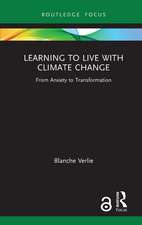Hazardous Air Pollutants: Assessment, Liabilities and Regulatory Compliance
Autor Jeffrey W. Bradstreeten Limba Engleză Hardback – 30 dec 1996
Preț: 887.73 lei
Preț vechi: 1216.08 lei
-27% Nou
Puncte Express: 1332
Preț estimativ în valută:
169.86€ • 177.83$ • 140.55£
169.86€ • 177.83$ • 140.55£
Carte tipărită la comandă
Livrare economică 05-19 aprilie
Preluare comenzi: 021 569.72.76
Specificații
ISBN-13: 9780815513865
ISBN-10: 0815513860
Pagini: 406
Dimensiuni: 152 x 229 x 24 mm
Greutate: 0.71 kg
Ediția:New.
Editura: ELSEVIER SCIENCE
ISBN-10: 0815513860
Pagini: 406
Dimensiuni: 152 x 229 x 24 mm
Greutate: 0.71 kg
Ediția:New.
Editura: ELSEVIER SCIENCE
Public țintă
Owners and operators of industrial facilities.Cuprins
IntroductionDefinitions of Hazardous Air PollutantsTitle III of the 1990 Amendments to the Clean Air ActOther Federal Regulatory RequirementsState Regulation of Hazardous Air PollutionSources of Hazardous Air PollutantsInventorying Hazardous Air Pollutants at Industrial FacilitiesMeasurement of Hazardous Air PollutantsHealth Risk Associated with Hazardous Air PollutantsNuisance Characteristics of Hazardous Air PollutantsLiabilities Associated with Hazardous Air PollutantsEmission Reduction AlternativesEstablishing and Maintaining a Hazardous Air Pollutants Management Program



























